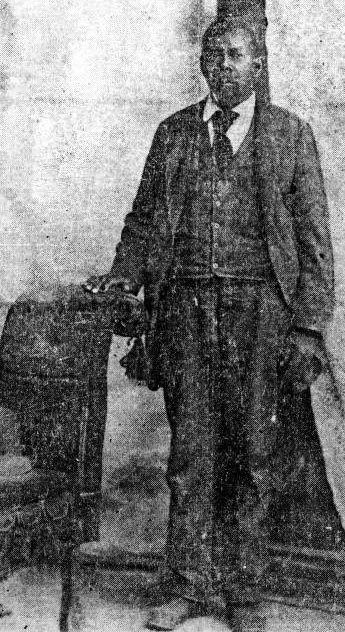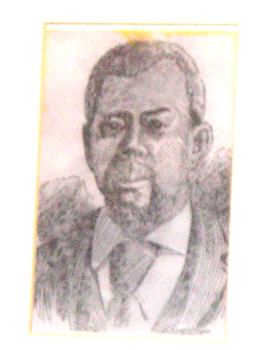Spouse(s) Martha Crosby Died 20 October 1903 | Children 2 Resting place Cottonwood Heights | |
 | ||
Born January 6, 1828North Carolina, US ( 1828-01-06 ) | ||
Faial island azores green flake tackle
"Green" Flake (January 6, 1828 – October 20, 1903) became one of the first African-American members of the Church of Jesus Christ of Latter-day Saints, and was one of the first of three African-Americans to enter the Salt Lake Valley on July 22, 1847.
Contents
- Faial island azores green flake tackle
- Ebro delta promo 2017 extreme fishing with green flake tackle
- Biography
- Life in Nauvoo
- Moving West
- Slave Status
- Legacy
- References

Ebro delta promo 2017 extreme fishing with green flake tackle
Biography

Green Flake was born a slave on the Jordan Flake Plantation in Madsburr, Anson County, North Carolina. At the age of ten, Green was given to Jordan Flake's son James as a wedding present. James & Agnes Flake, their three-year-old son William, and Green (along with their other slaves) moved from North Carolina to Mississippi a few years later. In the winter of 1843–1844, a stranger knocked on the door of the Flake home. The visitor was Benjamin L. Clapp, a Christian missionary from the Church of Jesus Christ of Latter-day Saints. Although skeptical at first, James & Agnes Flake were baptized a few weeks later. Their baptism brought immediate changes to the James Flake plantation. James began sharing his beliefs with his friends, acquaintances, and his slaves. Green came to believe the words of his master, and was baptized in the Mississippi River on April 7, 1844 at the age of sixteen.
Life in Nauvoo

Shortly after Green's baptism, James & Agnes Flake made the decision to leave their successful plantation and migrate North to Nauvoo, Illinois, in order to be closer to the main body of Latter-day Saints. Before the family left, James freed all of his slaves. Green, however, refused to leave the family. James in turn allowed him to remain with the Flakes, although he would keep his status as a slave. The Flake family, Green, and two other slaves moved from Mississippi to Nauvoo in 1844.

In Nauvoo, Green became very active in the church. William Jordan Flake, eldest son of James and Agnes, remembered "being taken to the top of the Nauvoo Temple by our Negro servant Green, and viewing the surrounding country for miles in every direction. Green assisted the Flakes in building a new brick home, and also worked on various church projects. At the time, the church accepted Green's labor as the Flake family's tithing. Popular legend says that for a time, Green Flake lived with Joseph Smith and acted as his bodyguard. According to histories, Green was "a big man, weighing over 200 pounds" and so definitely capable of the task. Scholars have since agreed that it is unlikely that he ever met Joseph Smith. However, Flake was not only present for but played a part in several key events in the church's history. He was a part of the first group of Latter-day Saints to leave Nauvoo for the West and participated in the initial establishment of Winter Quarters, Nebraska.
Moving West

The move from Winter Quarters to Utah saw Green Flake once again giving his all. One Latter-day Saint remembered that Brigham Young "requested the very best teams and outfits the Latter-day Saints could provide. James M. Flake, who had put his all upon the altar, sent his best slave, Green, with a pair of white Mississippi mules and white topped mountain carriage, to help the pioneer company to their destination." Although here all credit is given to Green's master, it is evident from his own life that Green had a personal desire to be an active member of the LDS faith and help fellow Latter-day Saints in any way he could. Green was instructed by James Flake to take the mules and carriage, cross the plains with the first company of Saints, send the carriage and mules back with some of those who would return to Nebraska, and remain out west himself to build a house for the Flake family in preparation for their arrival.
Brigham Young's advance company for the westward trek of the Saints began on April 17, 1847. Green Flake was assigned to the "fourteenth ten" of the pioneer company. Green was not the only African-American in this first group of Mormon pioneers. He was accompanied by Hark Lay and Oscar Crosby, both slaves. Flake, Lay, and Crosby were good friends and had much in common. All three were baptized members of the church and had come from Mississippi plantations. They often worked together and were engaged in such projects as establishing Winter Quarters, forging a trail along the Platte River to Ft. Laramie, Wyoming, and helping the company to pass through the Rockies. Green also had a particular task given only to him- he was to be Brigham Young's personal driver on the westward trek.
On July 13, 1847, Green was chosen to accompany Orson Pratt on an assignment to find and follow a trail into Salt Lake. This vanguard group reached the valley on July 22, 1847, and Flake rode in the first wagon to move through Emigration Canyon. All rejoiced upon reaching the valley, many showing their gratitude and devotion to God. Green himself was re-baptized on August 8, 1847 to show his gratitude and renewed desire to follow God. He was re-baptized by Tarleton Lewis and confirmed the same day by Wilford Woodruff. Green's activities from 1848–1850 are unclear. Some sources suggest he returned to Winter Quarters to help others make the trek West. Others state that upon his arrival in the Salt Lake Valley, Green set to work to carry out his master's instructions. He built a log cabin in Cottonwood, Utah, and planted crops. When the Flakes arrived in Utah in 1848, their home and farm were waiting for them; at this time Green was only 20 years old.
Slave Status
Though Green had initially been offered his freedom in Mississippi, after his refusal to leave he retained the same status and relationship with Caucasian settlers as a slave. As a result, sometimes, perhaps often, derogatory and demeaning statements were made. One Caucasian settler, William Crosby, wrote in a letter to Brigham Young that Green was a "boy who was mean, dirty, and saucy to his owner" and that Green needed a man "that would treat him right and make him work and behave himself." African-Americans like Green might be members of the church, but they were still seen by some as inferior. However, this was not the case in all circumstances. When difficulties between Green and Agnes Flake arose, Brigham Young personally became involved to ensure the conflict's peaceful resolution.
Between 1848 and 1850, Green Flake married Martha Crosby, Hark Lay's sister. Martha was born in Mississippi in 1828 the daughter of Vilate, and came to Utah in 1848. They had two children: Lucinda Vilate, born December 2, 1854 and who married George Stevensen in 1872, and Abe, born in 1857 and later married to Mary Steele. Martha (Crosby) Flake died January 20, 1885. After her death Green moved to Gray's Lake, Idaho. Exactly how and when Green Flake was granted his freedom remains uncertain. According to Flake family tradition, before going to San Bernadino, Agnes Flake gave Green to the church as tithing, after which he was freed by church leaders. There is no proof of this being the case. When the Flakes left for San Bernadino, Green remained in Utah. In 1854 Amasa Lyman, a church leader in California, wrote a letter to Brigham Young on behalf of Agnes Flake, asking for Young to send "the negro man she left" to help her, as her husband had died. Brigham Young responded that Green was in poor health and was needed in Utah to provide for his own family. Young freed Green soon after. Regardless, Green, Martha, and their children were listed as free residents of Union, Salt Lake County in the 1860 census. After he was granted his freedom, Green lived in Fort Union, Salt Lake County. Slavery was not officially banned in Utah until the spring of 1862. Green Flake died in Idaho on October 20, 1903. He was buried in Salt Lake City next to his wife.
Legacy
According to many scholars, most early African-American converts to the Church of Jesus Christ of Latter-day Saints "were strengthened by such compelling spiritual experiences that they overlooked prejudice and discrimination. Their children did not always share their parents' enthusiasm." However, Green Flake's descendants, at least some of them, proved to be the exception. Individuals like Mary Lucile Perkins Bankhead, a fourth generation descendant of Green Flake and other African-American pioneers such as Jane Elizabeth Manning James, chose to remain in the church despite discrimination such as the priesthood ban.
